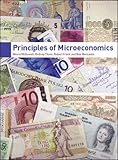Principles of microeconomics / Moore Mcdowell ... [et al.].
Material type: TextPublication details: London : McGraw-Hill, c2009.Description: xx, 452 p. : ill. ; c2009ISBN:
TextPublication details: London : McGraw-Hill, c2009.Description: xx, 452 p. : ill. ; c2009ISBN: - 9780077121709
- 0077121708
- 338.5 22
| Item type | Current library | Call number | Copy number | Status | Date due | Barcode | |
|---|---|---|---|---|---|---|---|
 Books
Books
|
Main library General Stacks | 338.5 / MC.P 2009 (Browse shelf(Opens below)) | 1 | Available | 006370 |
Browsing Main library shelves, Shelving location: General Stacks Close shelf browser (Hides shelf browser)

|

|

|

|

|

|

|
||
| 338.5 / FR.M 2008 Microeconomics and behavior / | 338.5 / FR.P 2009 Principles of microeconomics / | 338.5 / MA.P 2009 Principles of Macroeconomics / | 338.5 / MC.P 2009 Principles of microeconomics / | 338.5 / MO.M 2009 Microeconomics / | 338.5 / NI.I 2000 Intermediate microeconomics and its application / | 338.5 NI.I / 2009 Intermediate microeconomics / |
Includes index.
Part 1: Introduction -- 1. Thinking Like An Economist -- 2. Markets, Specialisation and Economic Efficiency -- 3.Markets, Supply, Demand and Elasticity -- Part 2: Competition and the `Invisible Hand' -- 4.Demand: The Benefit Side of the Market -- 5.Perfectly Competitive Supply: the Cost Side of the Market -- 6.Efficiency and Exchange -- 7.Profits, Entry and Exit: the Basis for the `Invisible Hand' -- Part 3: Market Imperfections (1): Market Power -- 8.Imperfect Competition and the Consequence of Market Power -- 9.Thinking Strategically 1: Interdependence, Decision-Making and the Theory of Games -- 10.Thinking Strategically 2: Competition among the Few -- Part 4: Market Imperfections (2): Externalities,Information, Distribution and the role of the Government in a Market Economy -- 11.Externalities and Property Rights -- 12.The Economics of Information -- 13.Labour Markets, Income Distribution, Wealth and Poverty Government in the Market: Regulation and Production of Public Goods and Other Services -- 14.Government in the Market Economy: Regulation and Production of Public Goods and Other Services.
Principles of Microeconomics provides students with an accessible text that reflects the issues and context of Microeconomics in Europe. It relies throughout on a well articulated shortlist of 7 core principles which are reinforced by real world examples. Review questions, exercises and problems encourage students to apply these principles in a variety of contexts. Developed from the well regarded US textbook by Frank and Bernanke it presents concepts intuitively through examples drawn from familiar contexts. The text encourages students to become 'economics naturalists'; people who employ basic economics principles to understand and explain the world around them. This approach helps students develop concepts and illustrates their applications in a real world setting.
1
There are no comments on this title.
